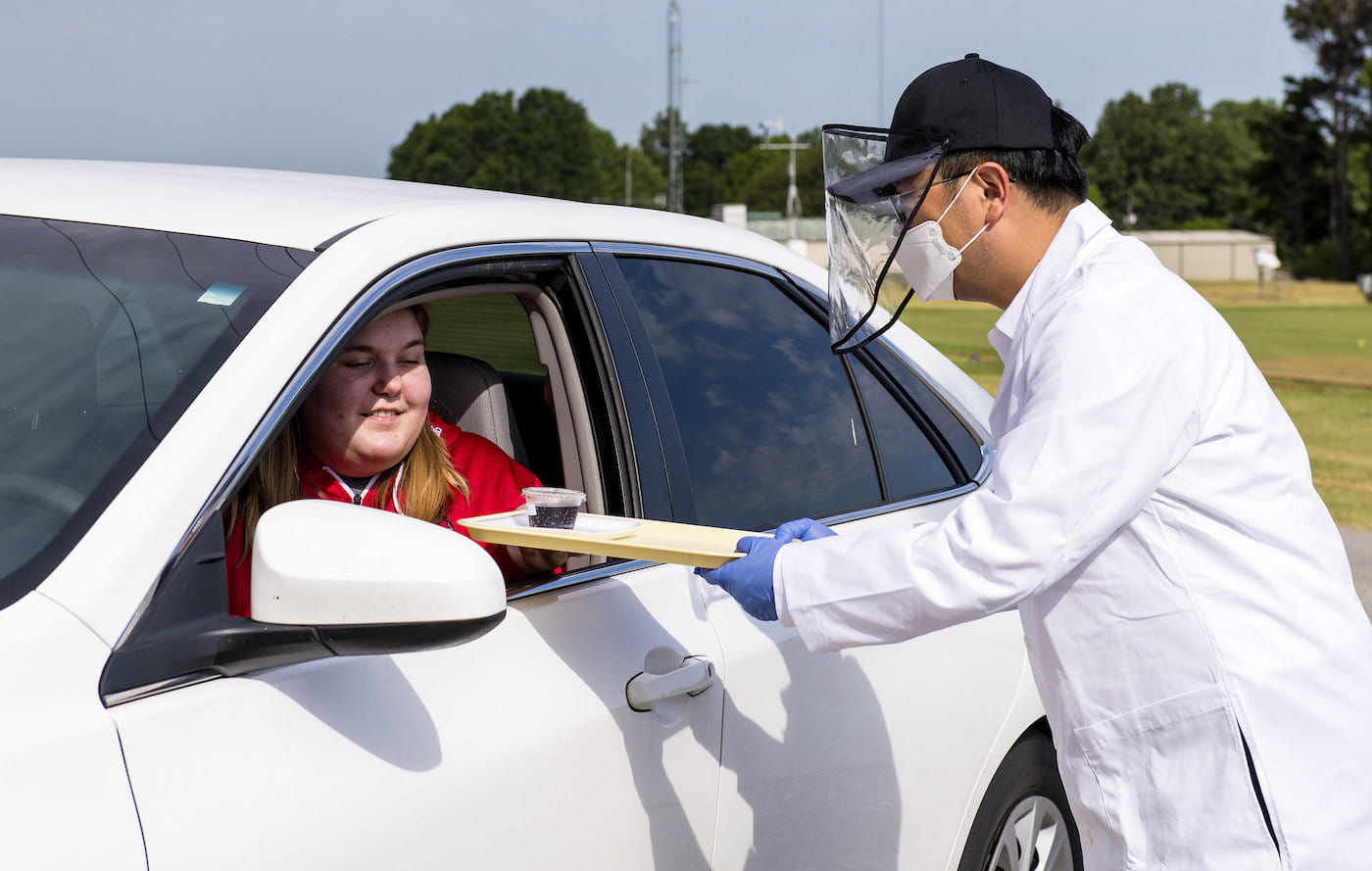Novel Drive-In Sensory Test Booth has Implications Outside Pandemic Conditions

The Problem
The pandemic halted many research projects. Those included necessary sensory tests that required panelist participation. Many potential panelists were hesitant to join, even with social distancing protocols and masks.
At-home testing — including home-use and in-home testing — has too many uncontrollable variables. “Home-use testing” requires panelists to prepare and evaluate test samples. “In-home testing” necessitates sensory professionals to prepare food in a test kitchen and deliver it to the panelists’ homes. Sensory testing at home may be affected by background distractions, like sounds from inside or outside a subject’s home. Delivering pre-prepared food can also change the temperature, texture and flavor, and that may cause each person to have different samples to judge.
Researchers needed a way to conduct these important sensory tests while keeping participants comfortable and preserving the integrity of the testing.
The Work
Han-Seok Seo, associate professor of sensory and consumer science for the Arkansas Agricultural Experiment Station and director of the Sensory Science Center, developed a drive-in booth method to use as an alternative to indoor sensory testing.
Sensory testing needs controlled conditions. To achieve this, Seo had the panelists remove any scents from the car, set the air conditioning to a specific temperature, drive their own cars and arrive alone.
He tested this method in three ways: test samples with big differences, test samples with subtle differences and a validation test with an entirely new group of panelists.
For each condition, he split the panelists into two groups, one for the drive-in sensory booth and the other for the indoor laboratory setting. The groups switched after their initial test. He analyzed their sensory perception, liking and emotional responses to the food.
The sensory conditions included panelists tasting items with significant differences in taste — lemonade, black tea, vegetable juice and coconut water — and the same panelists tasting types of yogurts with subtle differences in taste.
He introduced a different set of panelists to the experiment to validate the condition.

The Results
After each test, Seo examined the panelists’ engagement, safety and realism responses. Seo found no significant differences between the drive-in and indoor booths after the tests.
He also determined that people feel like they are participating in a more realistic setting when in the drive-in booth condition rather than in the indoor facilities. Panelists also said they felt safer from the COVID-19 virus while participating in the drive-in booth compared to the laboratory environment.
The Value
Sensory testing is an imperative part of product development. It gives sensory scientists and companies important information on how a product is perceived.
The drive-in booth testing method provided a safe, sustainable sensory testing method during pandemic conditions without altering panelists’ evaluations. The method is also applicable outside pandemic and epidemic concerns. Seo sees an opportunity for implementing the method in places that might not have access to a sensory testing building, like a smaller college or university that wants to conduct sensory studies. Companies are also interested in more realistic testing environments, and the drive-in booth may provide another option.
About the Researcher

Han-Seok Seo
Associate Professor of Sensory Science, Food Science
Doctor of Medical Science, Technical University of Dresden, Dresden, Germany, Otorhinolaryngology
Ph.D., Seoul National University, Seoul, Republic of Korea, Food and Nutrition
M.S., Seoul National University, Seoul, Republic of Korea, Food and Nutrition
B.S., Korea University, Seoul, Republic of Korea, Food Resources
Seo’s research program seeks to develop a better understanding of the role of sensory aspects in food perception and acceptance. The multidisciplinary research focuses on four areas: chemosensory perception and multisensory integration, new methodology of sensory and consumer testing, food europsychophysiology, and eating behavior.

